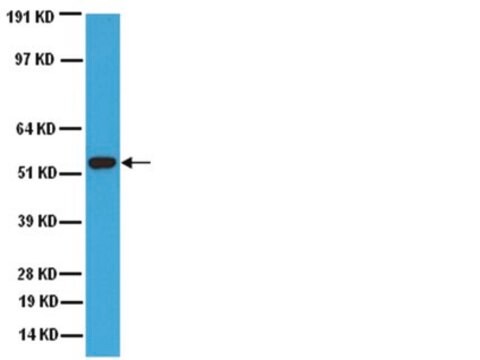詳細
Fragile X-associated Tremor/Ataxia syndrome (FXTAS) is a neurodegenerative disorder caused by an elevated CGG-repeat expansions (55-200) in the 5′ UTR of the fragile-X mental retardation 1 gene FMR1 (also known as FRAXA, POF1; Gene ID 2332) on the X-chromosome. The CGG repeat expansion in FXTAS triggers repeat-associated non-ATG-initiated translation (RAN or RANT), also known as repeat-associated non-AUG-initiated translation, within the 5’UTR of FMR1 mRNA, resulting in the production of fusion proteins (FMR1polyG) that contain N-terminal polyglycine fused to either C-terminal FMR1 in-frame sequence or one of two FMR1 frame-shift sequences. Immunohistochemical analysis of FXTAS brain tissues reveals FMR1polyG-positive aggregates that closely resemble neuronal intranuclear inclusions seen in polyglutamine diseases and other protein-mediated neurodegenerative disorders. Much larger expansions of the same repeat cause fragile X syndrome (FRAX), the most common inherited form of mental retardation, by silencing FMR1 transcription.
特異性
This monoclonal antibody does not detect the Fragile X mental retardation protein 1 sequences reported by UniProt (Q06787-1 through Q06787-9). It detects one of the two possible types of FMR1 frame-shift sequences with N-terminal polyG fusion found in Fragile X-associated Tremor/Ataxia syndrome (FXTAS) patients due to CGG repeats expansion (55-200 repeats) in the 5’UTR of the FMR1 gene. Due to the extended aggregation of the pathological forms of FMR1polyG, the detection of FMR1polyG in patient samples by Western blotting is not recommended.
免疫原
Epitope: C-terminal region.
Ovalbumin-conjugated linear peptide corresponding to a sequence from the C-terminal region of FMR1polyG.
アプリケーション
Research Category
ニューロサイエンス
Research Sub Category
神経変性疾患
Anti-FMR1polyG Antibody, clone 9FM-1B7 is an antibody against FMR1polyG for use in Western Blotting, Immunohistochemistry.
Immunohistochemistry Analysis: A representative lot detected FMR1polyG immunoreactivity in paraffin-embedded brain tissue sections from an Fragile X-associated Tremor/Ataxia syndrome (FXTAS) patient, but not in brain tissues from non-FXTAS individuals (Buijsen, R.A., et al. (2014). Acta Neuropathol. Commun. 2:162).
Western Blotting Analysis: A representative lot detected an exogenously expressed FMR1polyG EGFP fusion construct corresponding to 5′UTR of FMR1 with 50 CGG repeats (Buijsen, R.A., et al. (2014). Acta Neuropathol. Commun. 2:162).
品質
Evaluated by Western Blotting in GFP-FMR1polyG-expressing COS cell lysate.
Western Blotting Analysis: A 1:2,000 dilution of this antibody detected an exogenously expressed FMR1polyG GFP fusion construct in transfected COS cells.
ターゲットの説明
Variable, depending on the sizes of the FMR1polyG fusions and aggregates.
物理的形状
Unpurified
Mouse monoclonal IgG1κ antibody in ascites with 0.05% sodium azide.
保管および安定性
Stable for 1 year at -20°C from date of receipt.
Handling Recommendations: Upon receipt and prior to removing the cap, centrifuge the vial and gently mix the solution. Aliquot into microcentrifuge tubes and store at -20°C. Avoid repeated freeze/thaw cycles, which may damage IgG and affect product performance.
その他情報
Concentration: Please refer to lot specific datasheet.
免責事項
Unless otherwise stated in our catalog or other company documentation accompanying the product(s), our products are intended for research use only and are not to be used for any other purpose, which includes but is not limited to, unauthorized commercial uses, in vitro diagnostic uses, ex vivo or in vivo therapeutic uses or any type of consumption or application to humans or animals.
